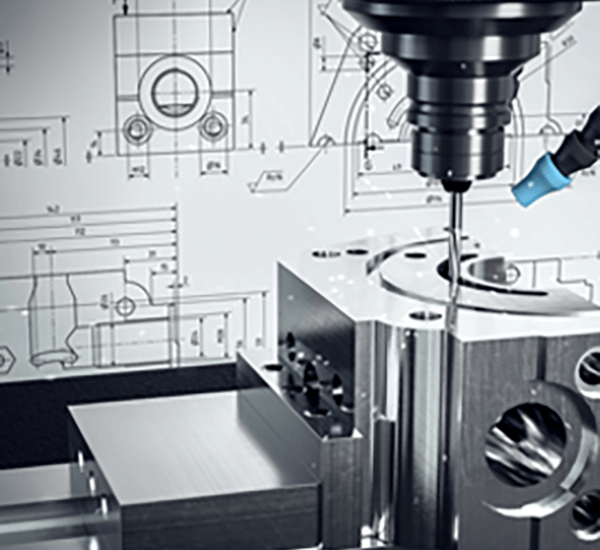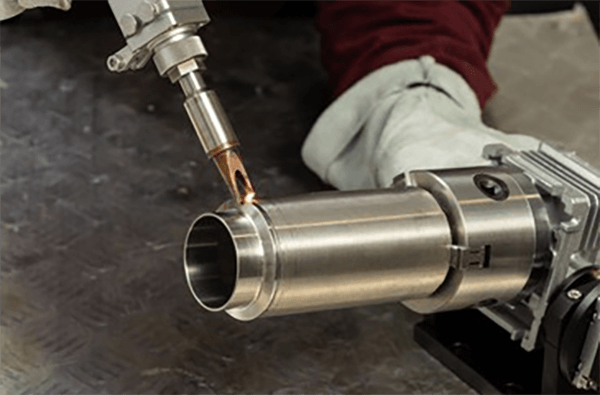
Realizing precise finish on a turned or milled piece is critical.
- Engineering annotations specify detailed surface expectations for components
- Technical callouts use Ra, a measure of average irregularity, to quantify finish
- Appreciating callout details is key to ensuring product functionality
- Defined surface quality influences lubricant retention, coefficient of friction, and wear resistance
- Correctly reading the finish notation is necessary to attain the intended result
Precision Principles of CNC Machining

Programmed machining operates as a leading production process via numerical control software the system carves sophisticated geometries with precision.
- The technology facilitates production of complex parts across many materials
- The versatility of CNC machining makes it ideal for aerospace, automotive, medical, and electronics
- Numerical control systems guarantee repeatable accuracy between batches
From initial prototype stages to mass-manufacture CNC machining supports modern production workflows
Understanding CNC Machine Specifications
Navigating specification tables often appears formidable at first sight
Though a little background plus organization helps you interpret technical details effectively
Set out by finding key metrics: spindle speed, feed settings, positional accuracy, work envelope, controller
Each characteristic modifies the machine’s effective performance.
In practice greater spindle speed often suits ductile substrates whereas higher feed supports productivity.
Grasping those connections helps choose machinery aligned with your needs
Always examine producer technical literature in detail.
Maker resources usually present informative direction and demystify jargon
CNC Machines Explained: A Full Guide
Automated CNC platforms are computer-commanded systems for precision manufacturing of multiple materials These systems execute G-code sequences to govern tool movement and actuation.
- Common CNC classes include milling machines, turning lathes, routing systems, plasma cutters
- Machining operations fit metal, plastic, wood, and composite workpieces
- Additionally CNC gear supports fast prototyping and limited production for entrepreneurs and institutes
Fundamental CNC Machine Concepts
These tools showcase a blend of mechanical exactness and intelligent software command Adaptive tools rely on coded programs to manufacture from simple elements to detailed structures Underlying principle converts virtual designs into actual manufactured items.
- Programmed machining process
- Programmatic production integration
It requires coordinated toolpath steps instructed by G-code Production personnel configure feeds and speeds, monitor cycles, and guarantee output quality.
Why Surface Finish Matters in CNC Machining
Delivering planned surface condition during machining is necessary It determines product function and aesthetic quality Material selection, cutting strategy, and finishing steps all influence final texture.
Refined surfaces boost longevity; rough surfaces can diminish functional performance Automated machining presents a spectrum of techniques and tools to accomplish desired finishes.
- As an example choosing diverse tool geometries |cermet inserts|spindle rpm choices to produce target surface
- Secondary operations like sanding, grinding, or polishing boost finish
Recognizing how feeds, speeds, and tool geometry interact yields optimal finishes.
CNC Machine Basics: From Operation to Applications
Programmed machining provides accurate part shaping across multiple material types They interpret digital toolpaths to carve detailed designs reliably Awareness of G-code, tooling, and machine operation aids successful production
Industry applications include aircraft, automotive, medical, electronics, and beyond From intricate parts for aircraft engines to precision molds for plastic injection CNC machines have become indispensable tools for producing high-quality products with complex geometries
Callouts and Surface Roughness for CNC Parts
Appropriate surface specification is essential during CNC part production It ensures that the final product meets the requirements for function and aesthetics Engineers generally specify surface quality using the Ra roughness notation Measured in micrometers or inches, the number reflects mean surface roughness height.
Balance smoothness needs with intended application when designating finish

Typically smoother finishes are chosen where tight dimensional control and alignment matter
By contrast coarser finishes may be useful where additional grip or friction is desirable
Employ an unambiguous finish note on drawings to specify surface expectations Enter the Ra specification and describe any post-process finishing or treatments.
Recall that well-defined roughness notes help ensure production success
Classification of CNC Machines and Uses
The world of CNC machining is vast and diverse with a wide array of machines designed to tackle various types of tasks They work with CAD/CAM programs to command cutters and deliver accurate component fabrication.
- Mills shape slots pockets and complex contours through rotary cutting
- Grinders refine surfaces and achieve tight dimensional tolerances via abrasion
- Laser cutters harness concentrated energy beams to slice through materials with exceptional accuracy and minimal heat distortion
Selecting equipment relies on part complexity material properties and tolerance needs Unique machine capabilities support varied industry needs such as automotive, aerospace, and medical.
Attaining Top-tier Surface Finish Through CNC
Achieving a superior surface finish is crucial in numerous manufacturing processes and CNC machining offers an exceptional method for achieving this goal Through careful tuning of feeds speeds and tool profiles operators manage chip formation and surface generation Besides that quality tooling combined with good lubrication practices leads to improved surface results By choosing tailored toolpaths and precise setups operators can deliver parts with outstanding finishes.
Achieving Surface Finish in CNC Programming
Mastering surface finish during CNC programming is crucial for achieving desired quality outcomes Selected feeds speeds and tool geometry directly shape the resulting surface profile Careful selection of these parameters in conjunction with proper lubrication and coolant management can yield a smooth and flawless surface finish.
- Besides that systematic tool upkeep and monitoring ensure sustained surface quality Plus regular inspection and maintenance of tools copyright finishing standards Furthermore regular tool maintenance and inspection are essential for ensuring a consistent what is cnc and high-quality surface finish over time
- For ideal finishes weigh material choice, roughness spec and usage demands
- Using CAM simulation lets you preview and tweak toolpaths to lower defect risk
- Moreover scheduled tool maintenance and inspection preserve surface performance
